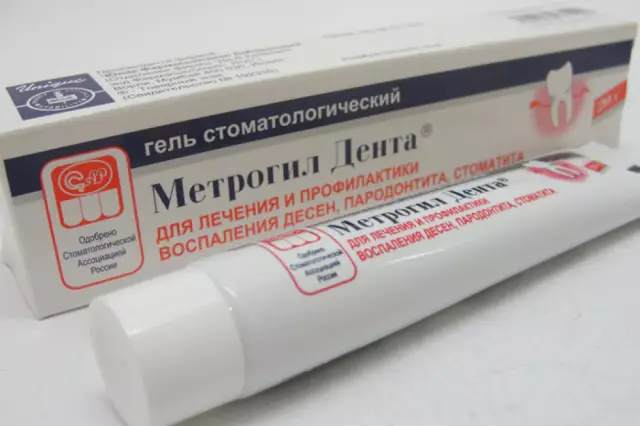- Author Rachel Wainwright [email protected].
- Public 2023-12-15 07:39.
- Last modified 2025-11-02 20:14.
Theofedrine
Instructions for use:
- 1. Release form and composition
- 2. Pharmacological action
- 3. Indications for use
- 4. Instructions for use
- 5. Contraindications to use
- 6. Application features
- 7. Side effects
- 8. Storage conditions
Teofedrin is a combined drug that has a bronchodilator and antispasmodic effect. Bronchophilin, T-Fedrin and Triphedrine IS are considered analogues of Teofedrin.
Release form and composition of Teofedrin

Theophylline anhydrous (0.1 g), phenobarbital (20 mg), ephedrine hydrochloride (20 mg), anhydrous caffeine (50 mg), paracetamol (0.2 mg), belladonna thick extract (3 mg), cytisine (0.1 mg).
In addition to the main active ingredients, Teofedrin contains microcrystalline cellulose, potato starch, croscarmellose sodium, calcium stearate, aerosil, plasdon S-630, talc.
Pharmacological action of Teofedrin
Theofedrine and analogs of Theofedrine help to relax the smooth muscles of the bronchi. Under the action of this agent, the lumen of the bronchi increases, the vessels of the lungs expand, the frequency and strength of heart contractions increase, and cardiac blood flow increases. The drug has an anti-inflammatory effect, has M-anticholinergic activity and a moderate diuretic effect. The caffeine in Teofedrin eliminates the feeling of fatigue and drowsiness, stimulates the psychomotor centers of the brain, enhances the action of analgesics, and has an analeptic effect.
The non-narcotic analgesic paracetamol in the composition of the drug blocks COX in the central nervous system, and also affects the centers of thermoregulation and pain. Phenobarbital has a muscle relaxant and antispasmodic effect. Phenobarbital in Teofedrin provides a long-lasting and mild sedative effect, and also corrects the psychoemotional state of a patient with broncho-obstructive syndrome of various origins.
Ephedrine hydrochloride stimulates the adrenergic receptors of the bronchi, causing them to expand and increase the excitability of the respiratory center. Respiratory analeptic cytisine reflexively stimulates the respiratory center with enhanced impulses that come from the carotid glomeruli.
Belladonna extract contains alkaloids of the atropine group, has an analgesic and antispasmodic effect.
Indications for the use of Teofedrin
The instructions for Teofedrin indicate that this drug can be used to treat bronchial asthma or obstructive bronchitis in chronic form. The use of the drug is appropriate for pulmonary emphysema.
Instructions for use
According to the instructions of Teofedrine, adult patients should be taken orally 0.5-1 tablet once a day. If necessary, the daily dose can be increased threefold. It is also acceptable to increase a single dose of Teofedrin (two tablets of the drug up to three times a day). Children from two to five years old are prescribed 0.25-0.5 tablets, children from six to twelve years old - 0.5-0.75 tablets. Theofedrine should be taken in the morning or during the day. The duration of treatment must be determined by the doctor.
Contraindications to the use of Teofedrin
Theofedrine and analogs of Theofedrine are contraindicated in sleep disorders, atherosclerosis of the cerebral and coronary vessels, convulsive conditions, severe heart disease, glaucoma, hyperthyroidism, and liver diseases. You can not take Teofedrine during pregnancy or lactation, as well as if you are hypersensitive to the components of this drug.
Features of the use of Teofedrin
Theophedrine should not be taken in the evening, as the usual sleep state may be disturbed. For the period of taking the drug, it is necessary to completely exclude the use of alcohol.
Care should be taken to use this drug in the treatment of diabetes mellitus. Due to the activity of the drug, the level of glucose in the chemical composition of the blood increases. During the period of receiving this tool, you should limit intellectual, labor activities and driving vehicles.
Side effects of Teofedrine are enhanced by the combined use of the drug with beta-blockers, indirect anticoagulants, fluoroquinolones, furosemide, cimetidine, carbamazepine, verapamil, antibiotics, hormonal contraceptives, MAO inhibitors.

Paracetamol in the composition of Teofedrin can lead to intoxication of the body when used together with inducers of liver enzymes and barbiturates. Ephedrine weakens the effectiveness of tranquilizers and analgesics. The bronchodilator effect of the drug decreases when taken simultaneously with beta-blockers.
Rifampicin decreases the concentration of theophylline in the blood, while oleandomycin, ciprofloxacin, and erythromycin increase it. Theofedrine reduces the therapeutic effect of doxycycline and its absorption. The use of Teofedrine in treatment in combination with lincomycin is unacceptable.
Avoid the combined use of Teofedrin with antiepileptic and psychotropic drugs. The effect of antihypertensive drugs, oral contraceptives and antidepressants when taken together with Teofedrin usually decreases, and the effect of hypnotics and diuretic drugs may increase.
Side effects of Teofedrine
During the period of treatment with Theofedrine, pain in the epigastric region, vomiting, nausea, tachycardia, tremors, insomnia, and difficulty urinating may occur.
In case of an overdose of Teofedrin, nystagmus, ataxia, headache, weakness, impaired cardiac activity and a decrease in blood pressure, seizures, increased sweating, and nervous agitation are possible.
In case of an overdose, gastric lavage is indicated. It is also necessary to carry out symptomatic therapy with constant monitoring of the basic vital functions of the body (respiration, pulse, blood pressure level).
Storage conditions
Theophedrine preparation should be stored in a place protected from light at a temperature of 15 to 25 ° C.
Information about the drug is generalized, provided for informational purposes only and does not replace the official instructions. Self-medication is hazardous to health!






